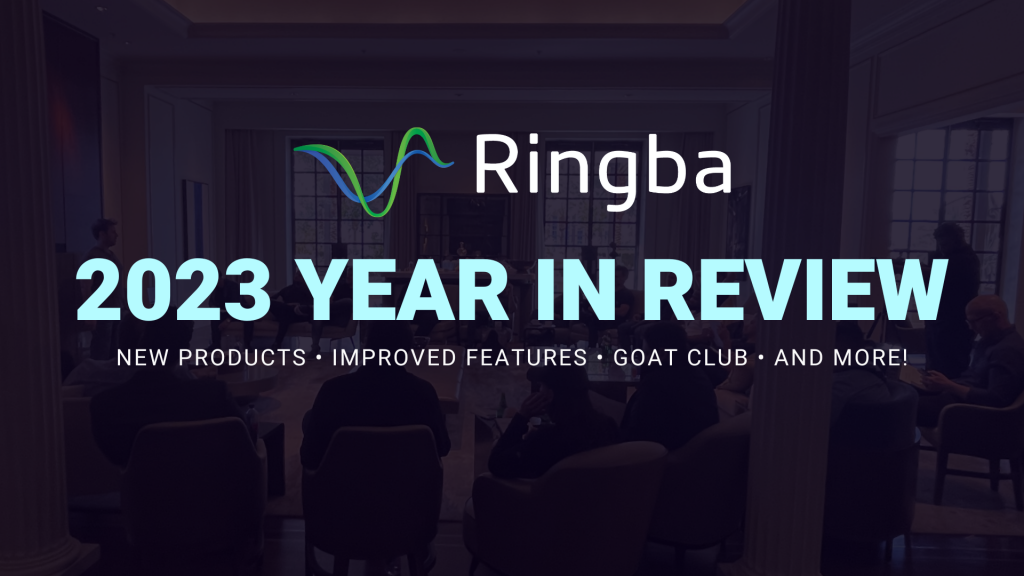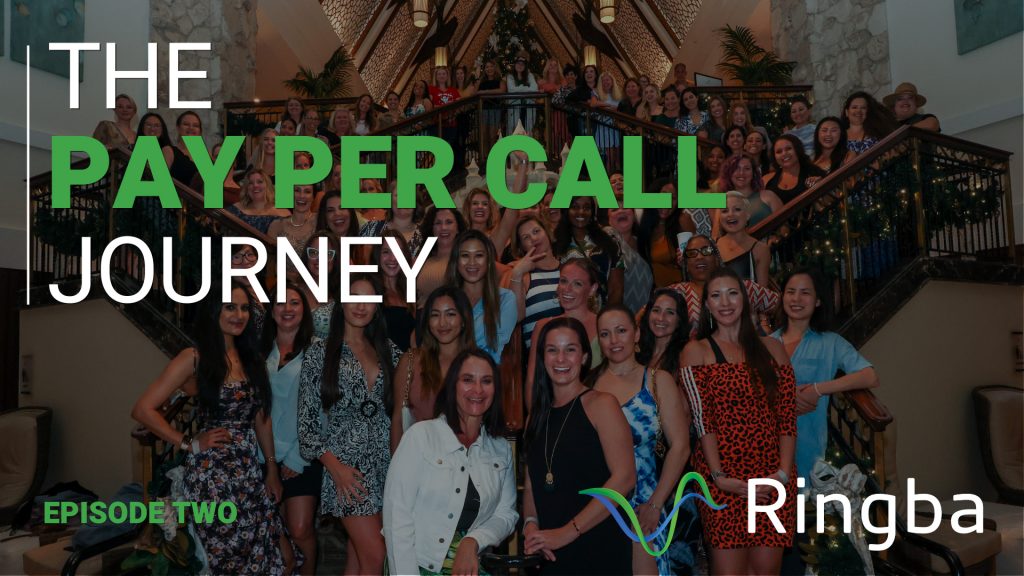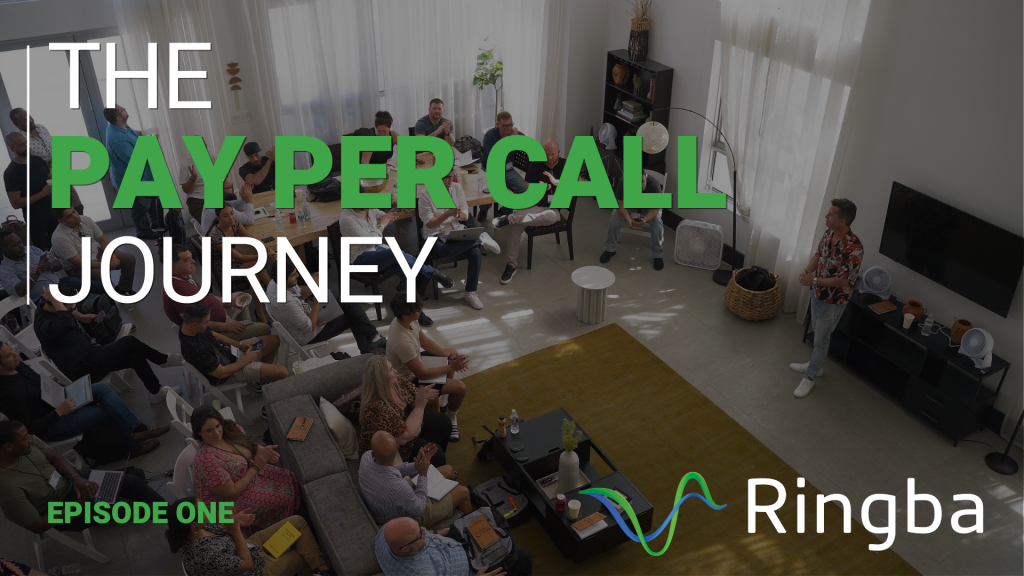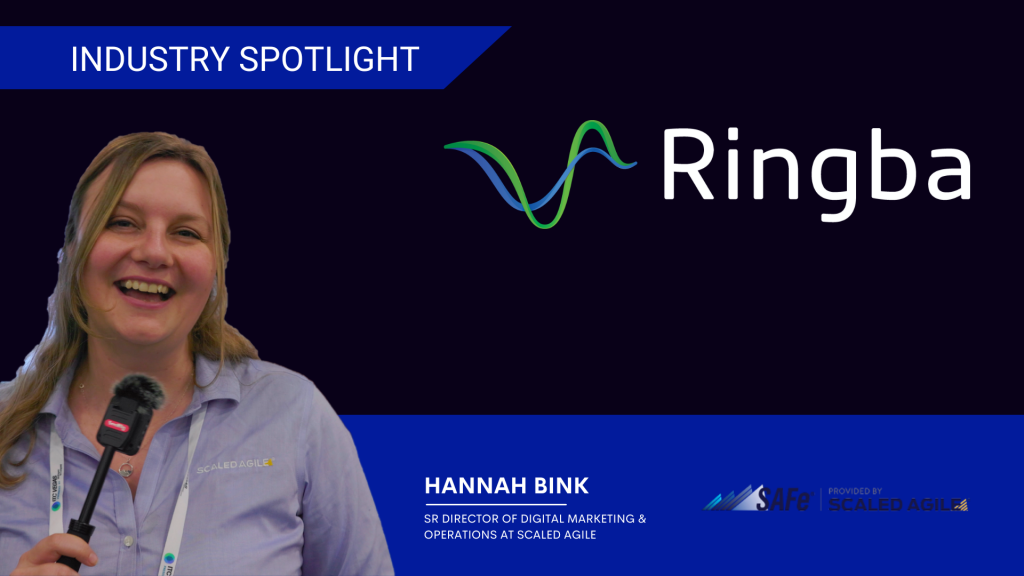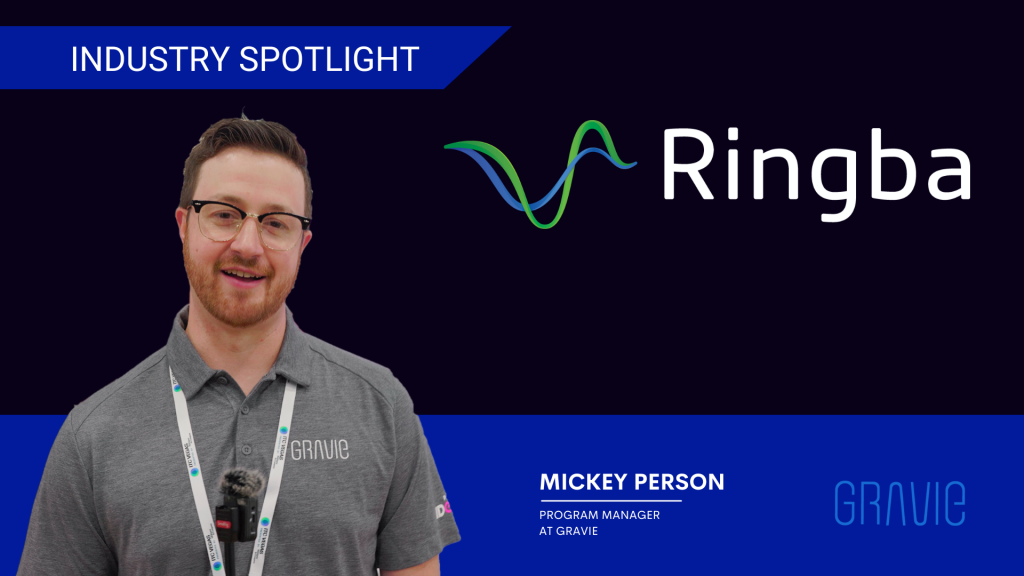Find out why the Pay Per Call industry is experiencing massive growth and how you can solve the biggest problems facing Call Centers.
Contents:
– The Opportunity in Pay Per Call
– Why Phone Calls are a Big Deal
– Built for Sustainability and Longevity
– Phone Calls Deliver Serious Value
– Pay Per Call and Call Centers
– Problems Facing the Call Center Industry
– Pay Per Call vs. Outbound Dialing for Dollars
– Pay Per Call vs CPA Affiliate Marketing
– The Pay Per Call Opportunity is Now
The Opportunity in Pay Per Call
Phone calls have the highest level of intent. There’s no question whether or not a consumer is interested in a product or service when they take the time to pick up the phone and call a business. It’s a business’ favorite type of lead, a live human that wants their product and takes the time to call. Not only that, when people pick up the phone and call, they’re serious.
When someone calls, they also want to buy immediately. We’re trained to buy instantly. When we go onto Amazon.com we want it now, we want it Prime, we want it delivered today, and so when a customer picks up the phone and makes a phone call, they want that product or service and they want it immediately, which means they’re highly likely to buy the product or service. Again, that’s why a phone lead has the highest intent and why it’s the best type of lead for a business.
Businesses are more likely to close new clients when they pick up the phone and call. Compared to a web lead or an online purchase form or something of that nature, a phone call has a drastically higher conversion rate. In some of these campaigns, you’re going to see a 20, 30, 40, 50, 70% conversion rate when someone picks up the phone to call because they’re excited about the product or service.
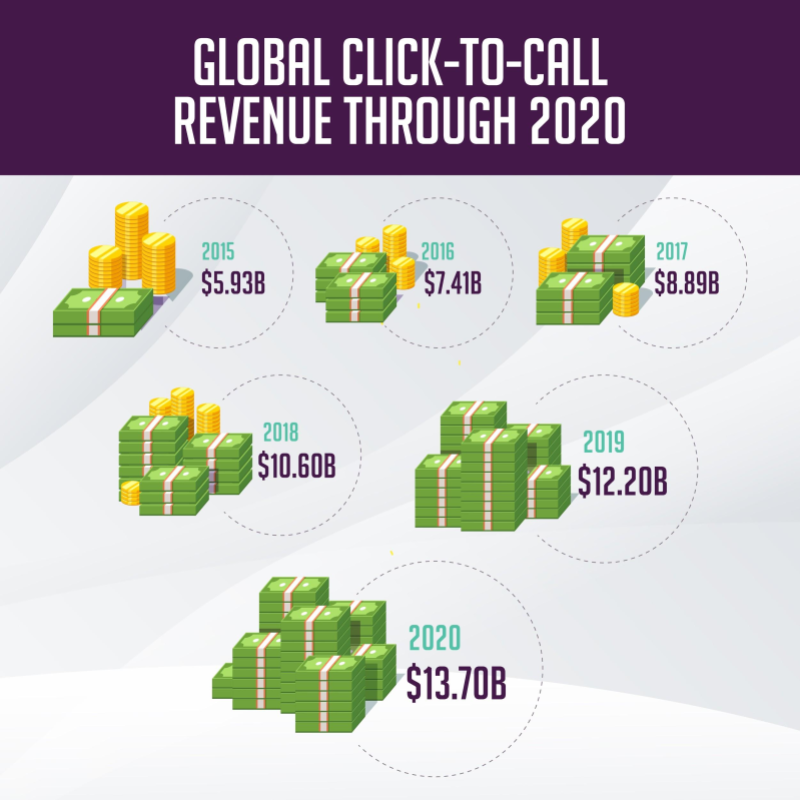
Phone calls are the highest return on investment type of lead for everybody that’s involved in them. That’s mean the affiliate, any brokers, the actual buyer of the phone call. In 2015, click-to-call revenue was just under six billion dollars. It rapidly climbed to 10 billion dollars in only a few years in 2018, and the velocity of the amount of money that’s being made in click to call is increasing, not decreasing. Why? Because more consumers call when they want something important to them, and click-to-call is the easiest way to do it.
Why Phone Calls are a Big Deal
Phone calls a big deal because most people only pick up the phone and call when it’s a complicated purchase or when it’s essential to them. Buying some more laundry detergent does not require another human. You select what you want; you buy it, it gets delivered – no big deal. But imagine if we’re talking about something important to you: like your mortgage, your car insurance or any insurance for that matter, or something that you need immediately like towing, or a leak in your roof and your kitchen is flooding or some other big problem in your life.
That’s when you pick up the phone and call – you do it when you need something immediate to deal with something important.
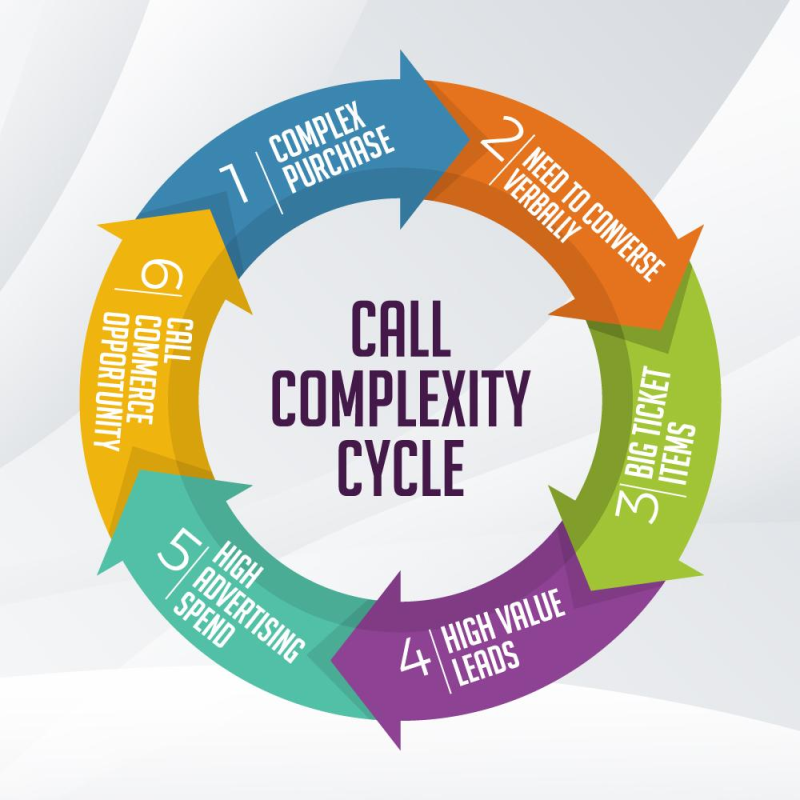
When you’re talking about a phone lead, you’re likely talking about something that is a big ticket item that’s very expensive because businesses would not survive if they took a phone call for fidget spinners. You can’t pay the human, give them a place to work, all the taxes and insurance, all the management, the oversight, the technology, the software, the setup, all that stuff that’s required to open a call center if they were selling fidget spinners over the phone. It just wouldn’t work. You can’t spend 22 minutes on the phone advising someone on a two-dollar purchase. The metrics don’t work out.
Where calls shine is on big ticket items, like a mortgage, for example. There could be hundreds of thousands or millions of dollars involved in that purchase, so it’s a big-ticket item. When you go to buy a new car, you’ll call the sales guy at the auto dealership to find out if they have the vehicle you’re looking for in inventory so you can schedule a test drive to talk about financing options. These are big-ticket items, making them incredibly high value leads.
High advertising spend means that you’re driving the biggest industries in the world with Pay Per Call.
Like I said, no fidget spinners. You’re talking about multi-billion and trillion dollar industries that are using Pay Per Call, and not just a couple of them. All of them. Because they all sell those big-ticket items that require high-value leads, which means they’re spending a tremendous amount of money on advertising, and that’s why it creates this critical call, commerce, opportunity. That’s why fundamentally Pay Per Call is a super exciting development.
There’s a lot more lead generation, a lot of advertising everywhere you look. That’s why an actual phone call with a human on it that wants to buy is the highest value that you can have if you’re a business that wants a new customer, and that is not changing any time soon. Those calls are going to be worth more money.
Built for Sustainability and Longevity
Pay Per Call is not going anywhere. The most prominent businesses in the world want more phone calls. What does that mean for you as even an affiliate that may want to drive a few calls a day or wants to get started in the space?
What it means is it’s not going anywhere. We’re not talking about some random advertiser that created an affiliate campaign that may be here in a couple of days or not. We’re talking about the biggest industries in the world that want phone calls, and they’re not going to disappear overnight. They’re not going anywhere. These brands have huge sunk investment costs. They’ve spent billions or even tens of billions or hundreds of billions of dollars to build their infrastructure, their sales process, their business, and all that other fun stuff.
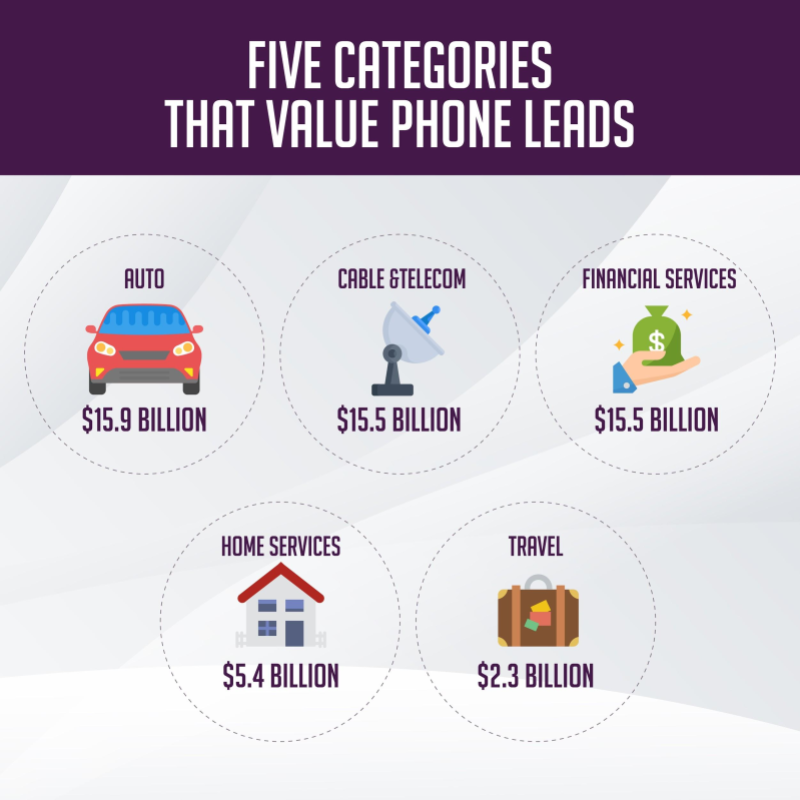
That means if you invest your time into Pay Per Call versus other types of affiliate campaigns or different types of online marketing campaigns when you finally can build something of value, it’s going to be sustainable. I’ve seen Pay Per Call campaigns that last for years and don’t even change. They’re just there because for it to go away, all those people lose their jobs, there are call centers involved, there are thousands of people involved in all these different verticals that work at every step of the way.
This isn’t a simple E-commerce product, and so it’s just not going anywhere. When campaigns don’t disappear, you can build businesses of value. You can even sell those businesses in the future, which is very different than an affiliate marketing campaign, okay? An affiliate marketing campaign, if you make it work, you’re lucky if it lasts a little while before you have to find another one. You’re almost certainly not building a business that you can sell, but in Pay Per Call it’s entirely different.
Phone Calls Deliver Serious Value
Any business you’re working on, even if it’s work from home, should have some enterprise value. Otherwise, you’re not building a business. You’re just creating some cash for yourself. That’s typically what affiliate marketing is, and most people aren’t able to do it, and they inevitably aren’t selling their affiliate businesses for the most part, okay? But in the case of Pay Per Call, you can create unlimited buyer networks and create something of value, which is really exciting, and then there are hundreds of verticals that need phone calls, and in those verticals there are thousands of sub-segments that require phone calls, and most of them are not tapped into right now!
Seriously. Most of them are not. Pay Per Call is effectively 10, 15 years behind all the other types of online advertising because it requires technology to make it work, and that technology didn’t exist back then. You are at the forefront of a new type of industry that has an unlimited amount of opportunity simply because enough people haven’t come in to set it all up yet.
Let’s take a look at some of these average conversion values over phone calls:
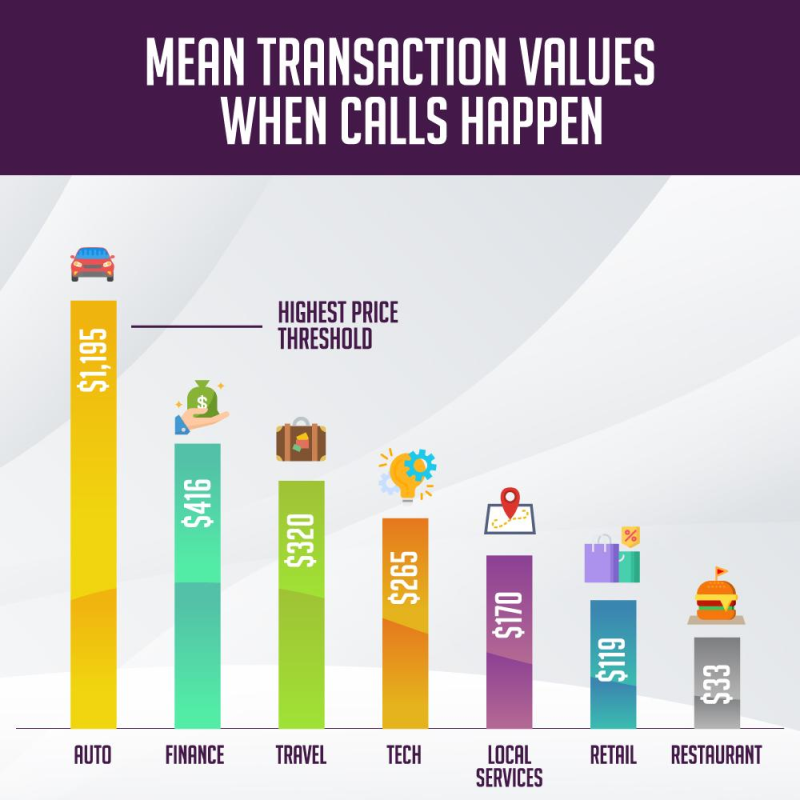
A restaurant, when they get a phone call, is going to make $33. That’s at the low end of the spectrum, but it still can be super valuable if you know how to do it. Retail, they’re going to make about 119 dollars on a phone call when they get one. Local services, like plumbers, towing, home services, etc.; $170 when they receive a phone call from somebody.
Now tech, such as software and services to businesses; $265 when they receive a phone call on average. The travel industry, talking about a multi-trillion dollar industry: all the hotels, rental cars, airlines, tour groups, everything, globally, $320 when they receive a phone call. Finance, this can be all sorts of things. Mortgages, debt consolidation, consumer credit cards; you name it. Anything to do with money, they’re making $416 on every phone call that comes to them. That’s ridiculous.
Then comes auto. That could include auto insurance, auto purchasing, dealership calls, repair calls, anything relating to an automobile; we’re talking almost $1,200 in revenue for every single phone call they’re receiving. You can see here that phone calls are of exceptionally high value across a myriad of industries, and every single industry that’s not mentioned here likely also takes phone calls. They’re somewhere along this value chain, and that’s why there’s a massive opportunity in it.
Pay Per Call and Call Centers
How could this be such a huge opportunity and it’s not being capitalized on in the best way that it can? First and foremost, it’s newer, it required technology to get there, and so we’re on the forefront of it, but even more importantly, what’s under the hood is call centers. It requires humans to take a phone call, if you’re going to work in Pay Per Call, and that typically requires a call center.
Let’s talk about the call center industry for a second and what’s happened in the call center industry over the last 10 to 15 years.
The call center industry has consistently grown over the past decade, everywhere, globally. Even in the United States with all the offshoring, onshore call centers of the United States have been growing like weeds. The fastest call center market that’s growing globally right now is the United States, which is super exciting. That’s because businesses in the United States need more call centers to take phone calls because they’ve discovered that inbound phone calls are the most valuable to their business.
Between 2010 and 2015, the call center industry in the United States grew 34.5%, which is enormous. There are 15.8 million call center agents that work globally every single day. That’s a massive amount of people that are sitting around to answer phone calls. Literally, tens of millions of people put their headsets on and take phone calls every single day. Hundreds of thousands of new call center jobs were created in 2018 because the demand for call center agents is going up, which means that demand for phone sales is going up.
The total global spending on call center operations in 2015 was 310 billion dollars, and the industry is expecting to reach more than 407 billion operating call centers by 2022. There is a significant amount of investment all around the world going into expanding the call center space, and all these people that are getting in these seats to take these phone calls, they need more phone calls, and that’s what the opportunity of Pay Per Call is.
Call centers spend an estimated 68 billion dollars every year on advertising to drive inbound telephone calls in the United States alone, and that results in over one trillion dollars in actual commerce. That may seem crazy, but the call space is significantly bigger than all of affiliate marketing combined, and the Pay Per Call space is not that big yet because there are not enough people in it to set up what needs to be in place and operate businesses to get their piece of the action. That’s why we spent millions of dollars building Ringba, and that’s why I’m spending my time explaining this to you right now; because this is the most significant opportunity in online advertising that I have ever seen, and I have been doing this since I was a little kid in my parents’ basement over 15 years ago.
Problems Facing the Call Center Industry
The best part about call centers, and why there’s a tremendous amount of opportunity around this. It’s not purely financial, okay? Call centers are filled with problems. They’re mostly a giant Rube Goldberg machine. You name it; whatever happens in a call center, it’s a problem. You get a ton of people in there with a ton of different personalities that are not necessarily high wage workers; for the most part, they’re low wage workers which leads to nothing but issues.
That means that you can use Pay Per Call technology to help call centers to solve a lot of these issues and help them grow their businesses, and any time you can help someone else build their business, you make a lot of money in the process. That’s what I’m doing right now. I am hoping that I can find thousands of people to come into this space, help me build it, make a ton of money in the process, and then trust Ringba with their call flow, so I can do what I just told you to do.
Running at peak efficiency in a call center is nearly impossible due to unpredictable call flow and labor management. Peak efficiency means that you have 100% of your salespeople on the phone selling at 100% of the time which is nearly impossible. This is because call flow is always unpredictable. Humans have to pick up the phone and dial when they’re interested. Not when the call center wants calls, but when the consumer is interested. For a call center, this means that call flow is entirely unpredictable.
We can iron out that unpredictability with technology to create a sustainable business model for call centers, and that’s how we’re going to make our money in this space. Call centers also have unpredictable labor management– you may have a schedule filled with people, but when you have 100 people in your call center, someone’s going to be sick, someone’s not going to show up, someone’s going to quit, someone’s going to do something, and thus you have unpredictable labor.
Trying to match unpredictable call flow with unpredictable labor management gets you this picture on the right. It’s just not easy, and it’s something that we may never master as humans fully, especially in smaller operations. As operations get bigger, it’s easier to match these things up just by sheer scale, but smaller sales call centers, which usually range from 15 to 100 seats have a much harder time doing it than operations that have thousands of seats.
Call center agents spend 25% of the time sitting idle. That means right now some calls are getting dropped because some call centers have too many phone calls, and then there’s another call center that sells the same thing as them that has 25% of their agents sitting around doing nothing because they don’t have calls.
Even more unpredictable than one call center trying to manage their call flow, if you think about the entire industry as a whole, 25% of agents are sitting idle at any given time. That creates a massive opportunity for us to generate a ton of phone calls and fill that available capacity, and if they’re not filling it, it’s just cost for them.
They’d be super happy if someone came along and said, “Hey, man. Can I sell you phone calls so that you can sell more of your products and services?” It’s not even a tough sell. It’s not even really a sell. It’s like, “Hey, man. You’ve got 25% of your capacity available. Would you like to buy some phone calls for me, risk-free, no money down so that you can fill that extra capacity and make more money?” The answer to that is always yes!
Another problem with call centers is that sales call centers typically deal with a lot of outbound calls. That’s why call centers have an age and attrition rate of 30-45% on average, which means that they’re just losing a ton of agents at all times. Call centers are essentially revolving doors for a whole slew of reasons and it costs over $6,400 on average to replace an agent that makes $12 an hour.
Pay Per Call vs. Outbound Dialing for Dollars
You’re paying them while they go through the training process, and then you get them on the phone, and maybe they’re not good at first, and so they burn a bunch of costly phone calls, which is lost revenue, and then the list goes on and on and on. But it is expensive to replace someone in a sales call center, and a lot of that has to do with keeping them happy, and a lot of the time they do outbound, which frustrates them.
Let’s talk about that. What’s the difference between Pay Per Call versus outbound dialing for dollars? In a call center that’s making sales, they’re dialing out to consumers that don’t want their phone call, don’t want to hear from them, aren’t expecting it, and generally, aren’t that happy to receive the phone call. Outbound sales burn out agents.
Cold calling is not an efficient process. If you get a great sales agent that kills it on outbound, you’re not going to keep them forever because sooner or later he’s going to get sick of it. It is a painful process. It’s not a whole lot of fun, and that’s why call centers lose so many agents in sales environments.
Now, highly skilled salespeople; the ones that are really good at what they do, it’s even worse for them because they should be closing a qualified customer lead and upselling them and doing nothing but generating revenue for the company, but instead, when they’re dialing for dollars, it just kills their morale, and it makes them unhappy.
Now, what’s the difference with Pay Per Call? Well, first and foremost, Pay Per Call is 100% inbound. An inbound call means that the person on the call is interested in the product or service. As in, “Oh, that looks interesting. I’m going to call now and talk to them about it.” An inbound call has a lot less risk than buying leads only to lose your sales agents. Additionally, those highly skilled salespeople like talking to an incoming caller.
Selling to someone interested in your product or service is not a chore. It’s enjoyable as a salesperson. If you have to try and figure out whether the person will even speak to you or you get yelled at all day, your morale drops significantly. That’s why Pay Per Call is exciting to call centers, and if you talk to a call center owner that’s doing 100% outbound right now and show them what Pay Per Call will do for their business, again, it’s not even a sale.
Inbound calls also have absolutely no TCPA requirements. One of the significant issues in a sales call center, when you’re dialing outbound for dollars, is if you buy some data that has a bunch of complainers in it or people on the do not call list or people that get upset. There are hours of operational requirements with outbound dialing. You can’t do it after specific hours of the day, you can’t do it on particular days of the week, but with an inbound phone call, when someone calls you, it doesn’t matter. You can run 24/7, 365, no one can complain. If someone on the do not call list picks up their phone and calls you, you have zero liability. That’s an incredibly exciting thing for a call center owner.
There’s also a predictable cost per acquisition at scale. If you buy a bunch of a data and you’re dialing for dollars, you have no idea if that data is going to yield a cost of acquisition of a customer that makes you a profit, and that’s a scary thing as a business owner. You’re like, “Oh crap. I’ve got to spend all this money on data, all this money on agents, and if I dial this data and I don’t sell anything, I just lose money!”
That’s why it is not complicated to find people who want inbound phone calls. Inbound phone calls do not suffer from list burnout. They’re just always there, and everyone’s happy to take them, and so it only makes everyone’s lives easier, and that’s one of the many reasons this is all so exciting.
Pay Per Call vs. CPA Affiliate Marketing
Maybe you’re an affiliate marketer. Perhaps you work with a bunch of affiliate networks, you’re driving a bunch of campaigns right now, and you want to take a look at Pay Per Call and why you should be doing it. Well, first and foremost, it’s more sustainable– significantly more sustainable. It will always be more durable, and people cannot just copy your campaigns.
In affiliate marketing, people see your landing page or your ad, and they copy it. Competitors will use the same advertiser, a different one from you, rip off your campaign, and then make some money with it. So in affiliate marketing, if you make a perfect campaign and it’s a giant winner, chances are it’ll get ripped off immediately. In two or three months from now, you’ll be looking for new campaigns, new angles, you’ve got to reinvent your business altogether. That is why you cannot sell an affiliate marketing business because they disappear in weeks or months when more competition comes into your space.
Pay Per Call is not like that because humans have to be available to take the calls. Now Pay Per Call campaigns are also not based on tricks. You’re not cloaking ad networks; you’re not doing a bunch of shady stuff to try to make your campaigns work. That’s not how this works. With Pay Per Call, you need people that are interested in the products and services.
Pay Per Call is a lot more complicated to get started. You’re actually going to have to do a bunch of work, but if you’re willing to do some work, put your head down, learn a new industry and focus on it, you can build a real business that you might one day be able to sell for a hell of a lot of money. To me, that’s a lot more exciting than worrying about if some guy is going to steal my landing pages, or if I’m going to have to come up with a new campaign next week.
The difference, too, is that technology is a requirement in Pay Per Call. You have no choice. If you do not use technology like Ringba, you aren’t going to be successful. Some people do and maybe make a little bit of money, but you are not going to be able to build a real business that’s scalable without the technology. If your goal is to work a couple of hours a week or some laptop lifestyle bullcrap, you may be able to make that happen, but we all know that typically does not occur.
In this space, you’re going to have to do some work, and you’re going to have to use technology to be successful, but what you get in the end is something incredibly gratifying that has value, and that’s what you should be trying to build. Why? Because humans have to be available to take calls. That means you have a competitive advantage, you have to work with people, and you have to build buyer networks to take your phone calls. It’s not complicated to do this, but once you’ve set it up, other people can’t just come and take it.
The Pay Per Call Opportunity is Now
In summary, the call center industry is rapidly growing at a breakneck pace. It’s fragmented, so there are thousands of call centers all over the place that are run by different people, and messy; and messy means opportunity. Inbound calls have significantly lower agent attrition rates than outbound, so it’s not a problem. If you can find some outbound call centers to convert them on inbound, and then you have your offer, essentially. You are the advertiser.
Inbound calls have a significantly higher conversion rate than outbound. So call centers and businesses everywhere, whether it’s a dentist’s office or a multinational call center operation, loves an inbound phone call. I don’t mean they like it. They love it. It’s so much better than the alternative that it’s the gold standard.
Human capacity creates a moat around your business, and that protects it. If you’re able to fill capacity in a call center, they don’t need more affiliates; no one can steal your campaigns, you own it. That’s why Pay Per Call campaigns are longer-term and more sustainable. Even better, the industry is fresh. Pay Per Call is where display and affiliate advertising was 15 years ago.
So it’s fresh, there’s a ton of opportunity in it, and you can come to get yourself some first mover advantage instead of picking the carcass like a vulture as an affiliate somewhere else. If you’re willing to learn it, the opportunity is there, and I guarantee you that some people are going to see this, probably millions of people, and some of them are going to show up and make tens of millions of dollars in this space because they’re going to take the time to learn it.
If you don’t want to take my word for it, that’s fine. Read BIA/Kelsey’s Industry Watch on Call Commerce. It tells you all about the space and how much opportunity is in it, and if you don’t know who they are, they’re one of the most respected consulting firms on Earth. If you’re not sure after what I just said, that Pay Per Call is a massive opportunity, read that entire document, and if you disagree with me, shoot me an email. I’d loved to debate it with you, but this is a massive opportunity, and people are going to make millions, tens, or hundreds of millions of dollars in this space as it matures over the next few years, and I hope it’s you.

